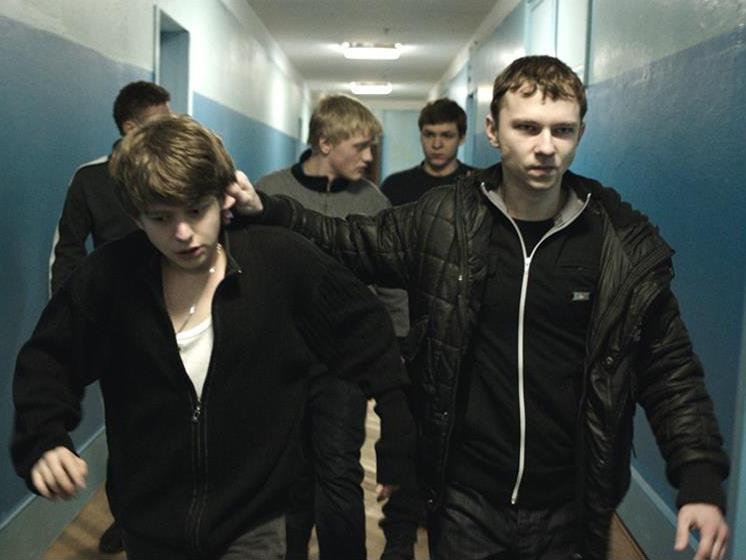From the moment The Tribe (Plemya) follows a teenage boy, Sergey (Grigoriy Fesenko), from a noisy bus stop to the Ukrainian boarding school for the hearing impaired that will become his new home, the film feels like an exercise in eavesdropping while peering through a stranger’s window. Conversations play out in plain view, yet first-time writer/director Miroslav Slaboshpitsky doesn’t allow audiences to get too familiar, nor to glean all the details. It’s not what is said that is obscured, but the ability to interpret its meaning in the manner viewers are accustomed. As the setting intimates, the characters communicate via sign language, with the filmmaker choosing not to present any form of translation, subtitles or voiceover.
Instead, The Tribe carefully observes Sergey’s increasingly heated exchanges with his new classmates, particularly the titular gang. They’re the real powerbrokers on the rundown campus, and not just of the too cool for school, throwing their weight around type – they’re also dallying with theft, intimidation and prostitution in their own Lord of the Flies-like existence. First, the seemingly innocent Sergey is hazed and initiated into the group; then, he’s accepted into their hierarchy and immersed into the thick of their illicit activities. When he is subsequently appointed as the caretaker of the two girls his delinquent friends routinely pimp out to truckers, he earns the tribe’s trust, but also threatens to overstep his bounds when his new role clashes with his growing romantic leanings.
Verbal language might be lacking in what evolves to become a violent and haunting schoolyard affair, as is music; however the film is far from silent. Atmospheric and incidental noises create an audio track that relates its own account through footsteps, rustled leaves, thrumming engines and creaking bed frames, and even more so through markers of the characters’ physicality, such as the movement of clothing, breathing, the thuds of fists against chests, and involuntary moaning and gasping. As mixed by Sergey Stepanskiy, every sound means something, as does every absence — not just as permanent reminder of the environment the feature inhabits, but in telling the story. Indeed, Slaboshpitsky’s most brilliant narrative manoeuvrings become evident, and The Tribe‘s most shocking sequences as well, when the film depicts the tragic consequences of an aggressive, aurally deficient existence.
Of course, the precisely framed, intricately choreographed imagery does the bulk of the work in relaying the tense and tragic tale. The expressive hands and gestures of the non-professional performers say much that the viewer can’t understand, but their placement within the frame and the camera’s movement says much, much more. Though editor and cinematographer Valentyn Vasyanovych plunges headfirst into a procession of chaotic scenarios, he frames and weaves together the various goings on with the utmost control. Long takes and wide shots are the film’s preference, whether fluidly following Sergey stalking through school halls and walking along rows of trucks, or waiting and watching patiently as fights, bullying, sexual dalliances and other encounters start to erupt.
Whatever vivid visuals adorn the screen at any given time provide sights as striking as they are engaging; however it is Slaboshpitsky’s decision to render the movie without accompanying clarification – either via voice or text – that forces the audience to not only look as closely as possible, but to interact with the film in a different way. Viewing The Tribe is an active pursuit of constant examination, of scouring the image for details that fill in the gaps left by the lack of traditional dialogue. Piecing together context and rationale is a puzzle; motivations become apparent, as well as a clear comparison between the anarchy of insularity depicted and the state of the feature’s Ukraine setting, yet what resonates is that actions truly do speak louder than words. Stripped of description, explanation, discussion and inherent interpretation, that’s where the film leaves its viewers in their unlikely prying into another world: bearing witness to soundless fury that signifies everything about the most brutal, primal aspects of human behaviour.
Rating: 4 stars out of 5
The Tribe (Plemya)
Director: Miroslav Slaboshpitsky
Ukraine / Netherlands, 2014, 132 mins
Australian Centre for the Moving Image
www.acmi.net.au
2–10 May
Actors:
Director:
Format:
Country:
Release:





